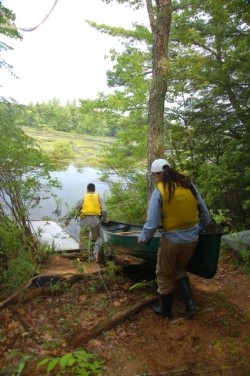You are here
A Look Inside Carnivorous Plants
The complex system of aquatic life that resides inside a carnivorous northern pitcher plant is the subject of a new study by post-doctoral fellow Ben Baiser and senior ecologist Aaron Ellison. These tiny, wriggling organisms--mosquito larvae, mites, rotifers, and copepods--are crucial to the pitcher plant’s ability to process food. They create a sort of ‘processing chain’ to break down the insects that fall in.
According to the new study in Oikos, which has earned an "editor's choice" designation, the way these tiny organisms assemble inside pitcher plants is not random. “You take out one species, and that affects everything else,” says Baiser.
The research, funded by the National Science Foundation, has taken place over more than 10 years, from British Columbia to Georgia, the full extent of the northern pitcher plant's range.
- Listen to the AAAS Science Update interview.
- Read the Harvard Forest press release or see all press resources.
- Read the original paper in Oikos.
- Read a Harvard Forest summer student's dispatch about her work on the project.
The northern pitcher plant (Sarracenia purpurea) – left – and sundew (Drosera sp.) – much smaller, far right – are the two types of carnivorous plants at the Harvard Forest. Photo by Roxanne Ardeshiri.

Ben Baiser and Harvard Forest Summer Research Program student Roxanne Ardeshiri head out to Harvard Pond in Petersham, Mass., to study pitcher plants. Photo by Aleta Wiley.

